


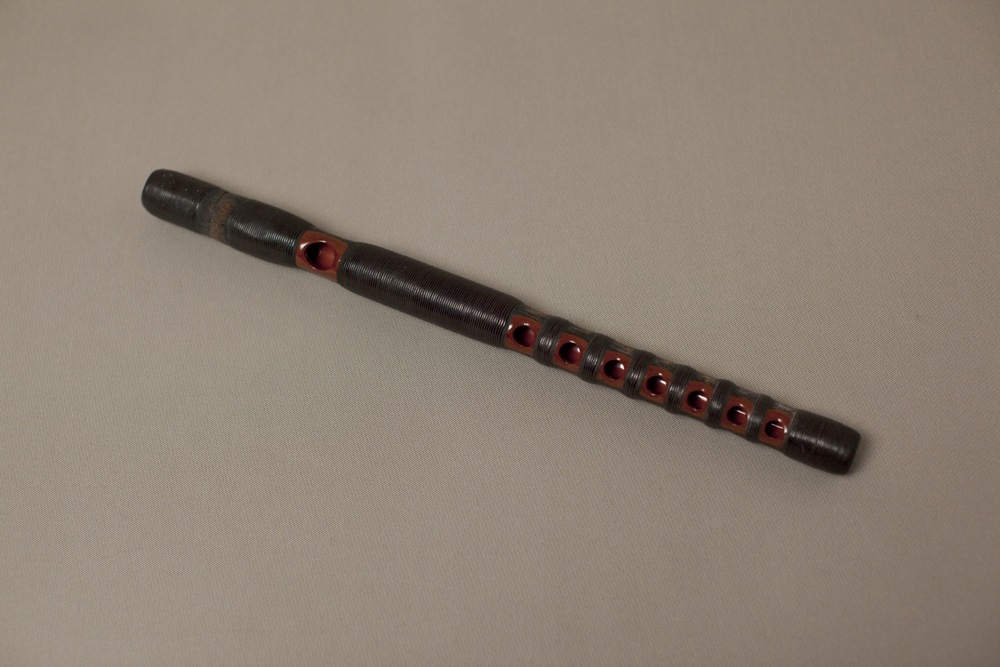
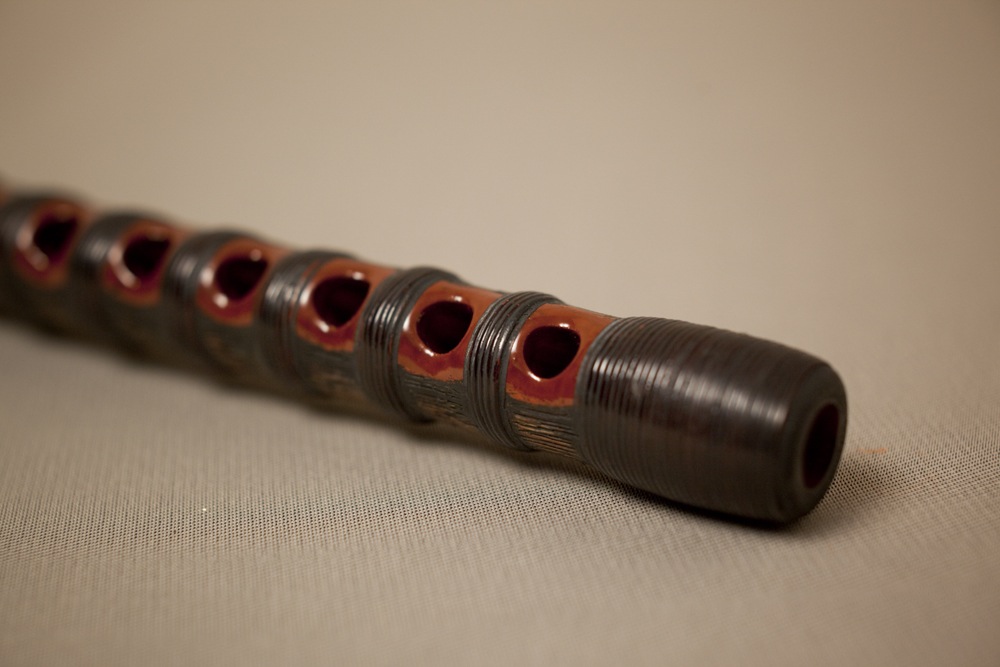
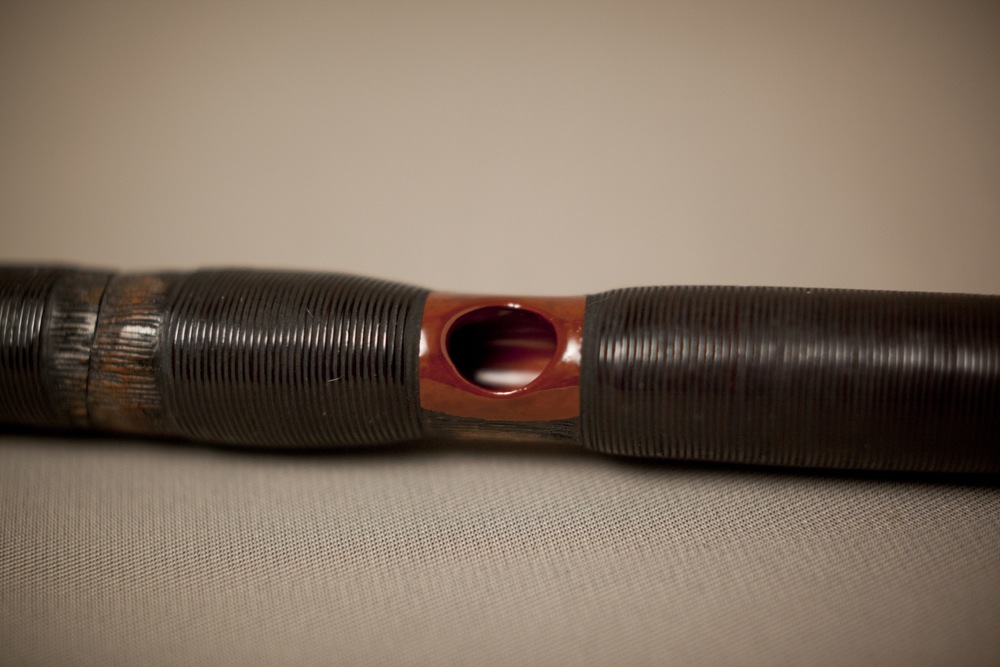
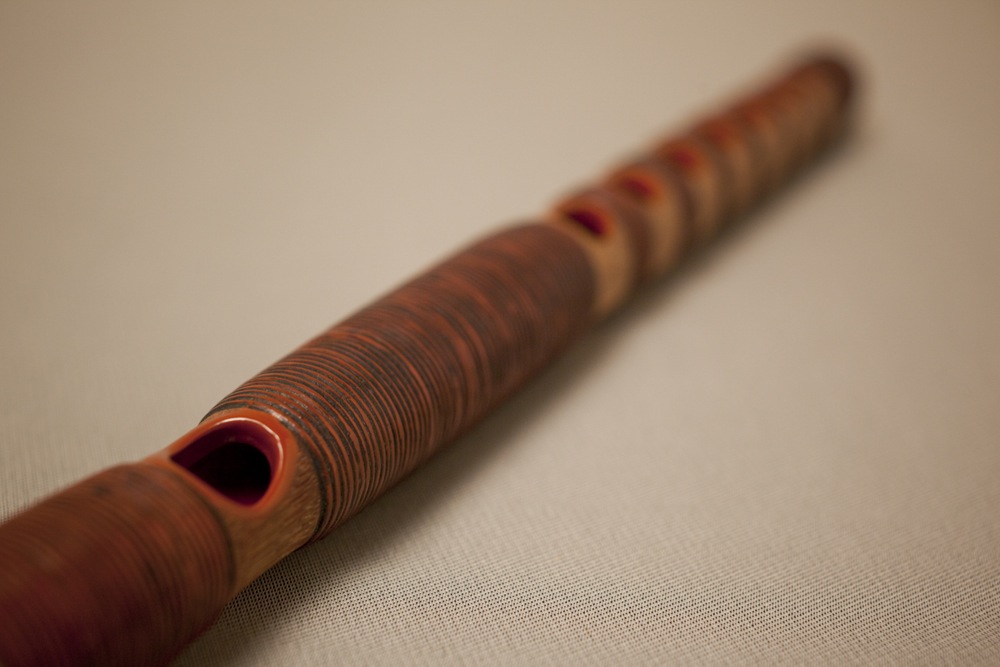
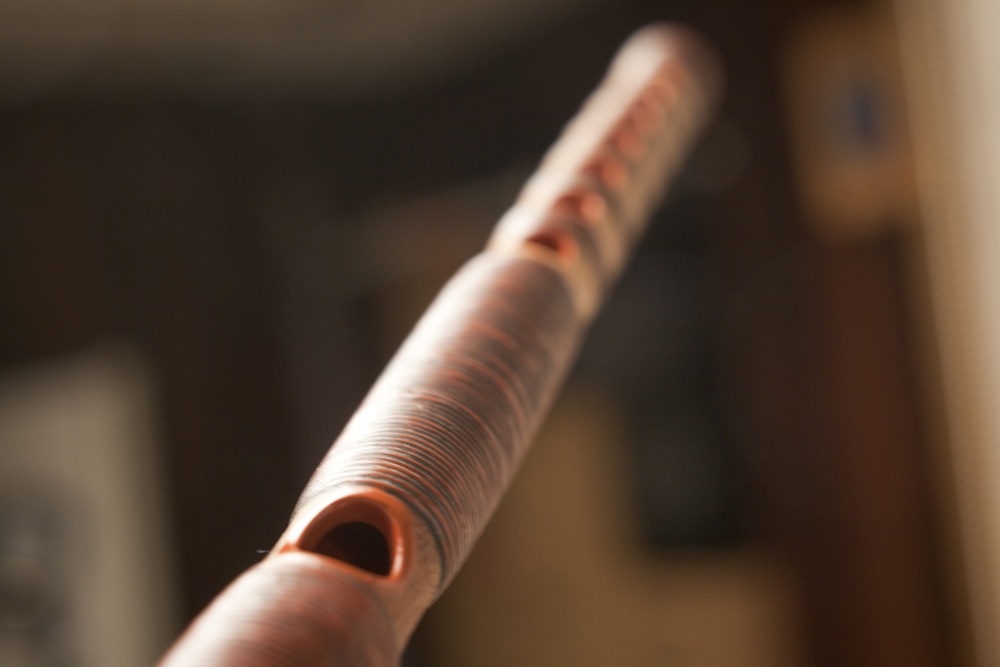

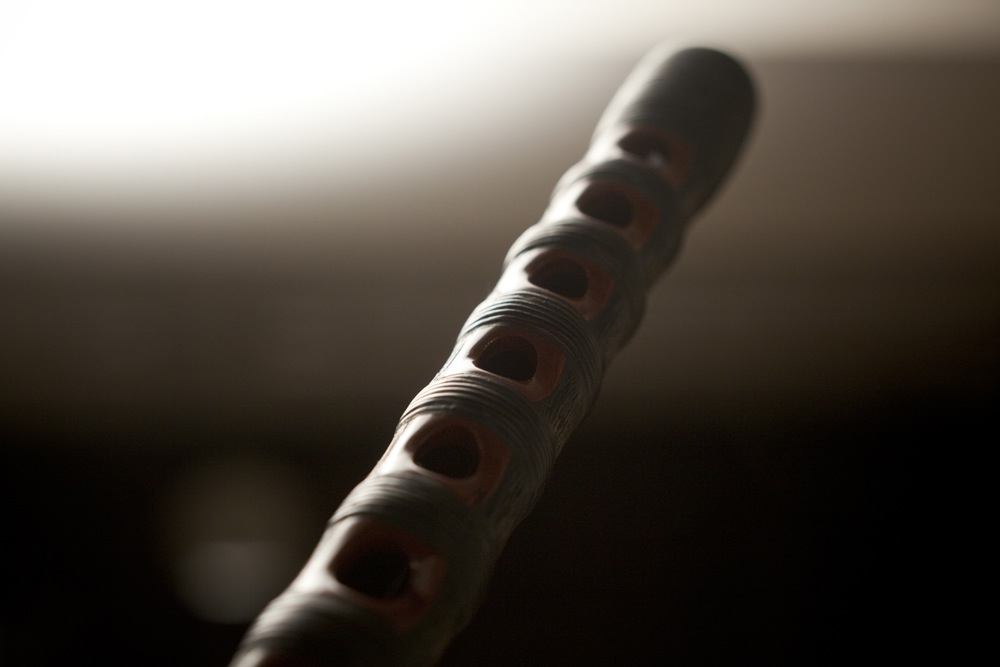
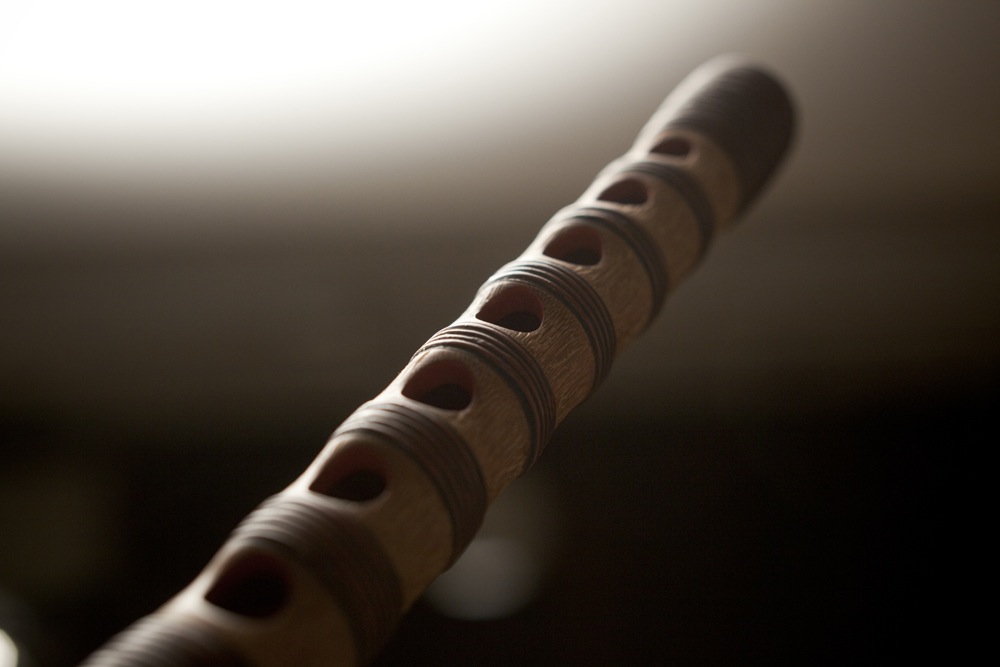
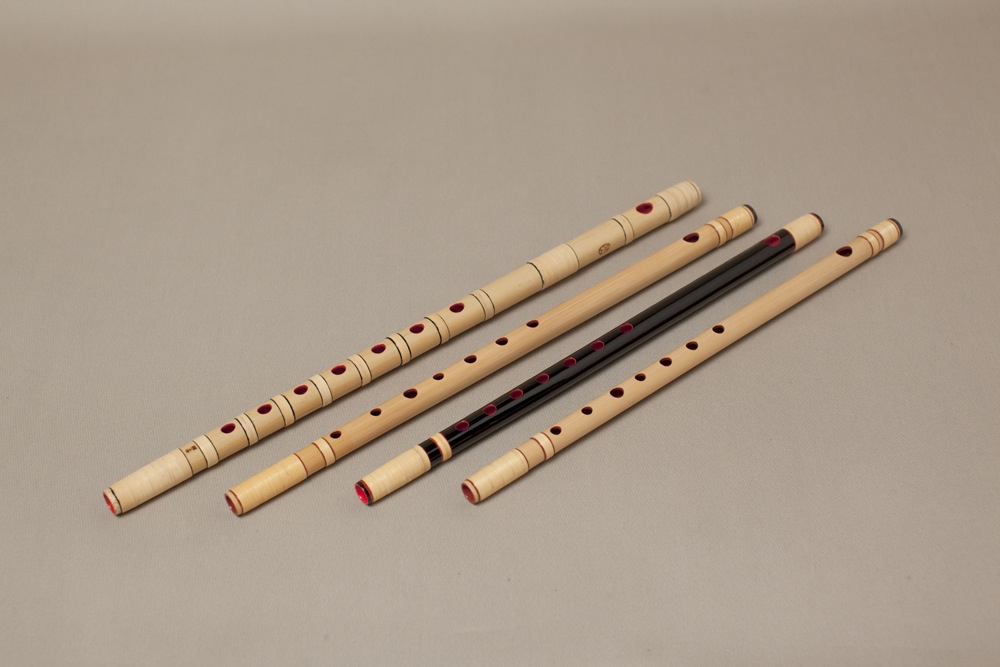
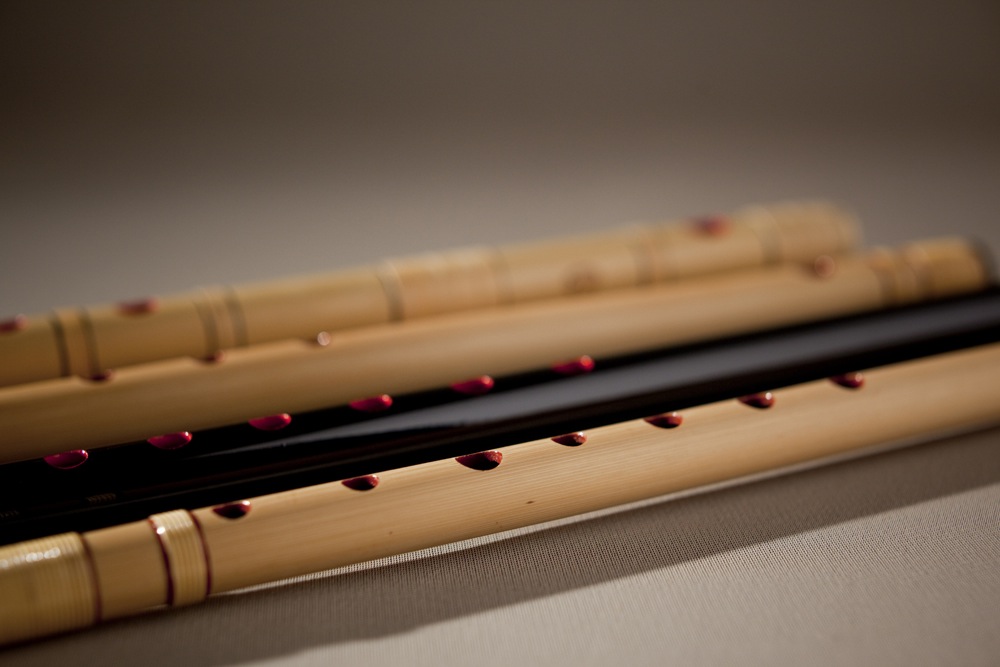
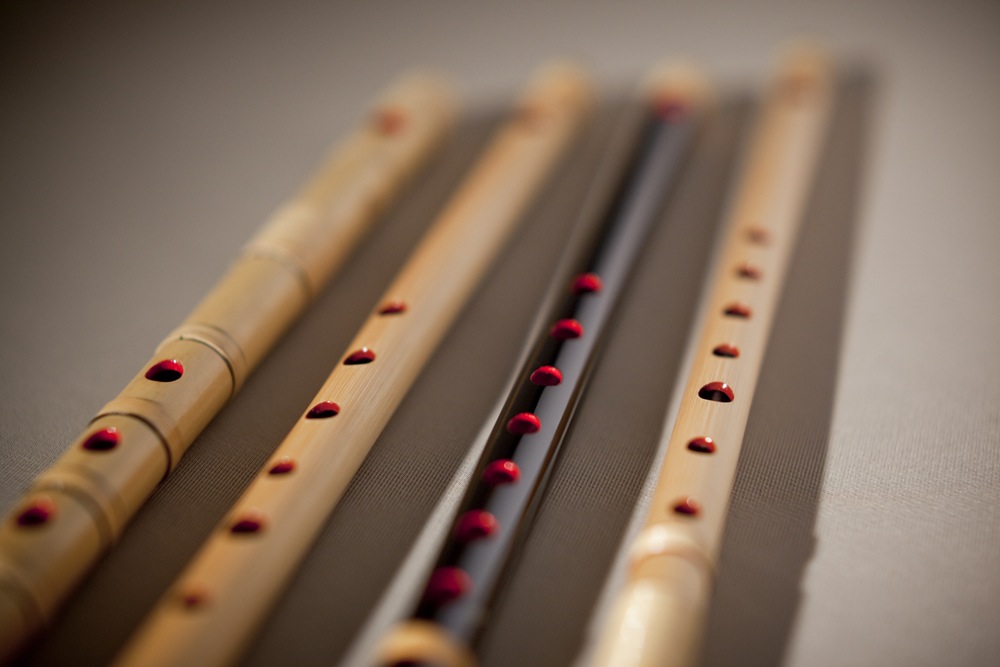
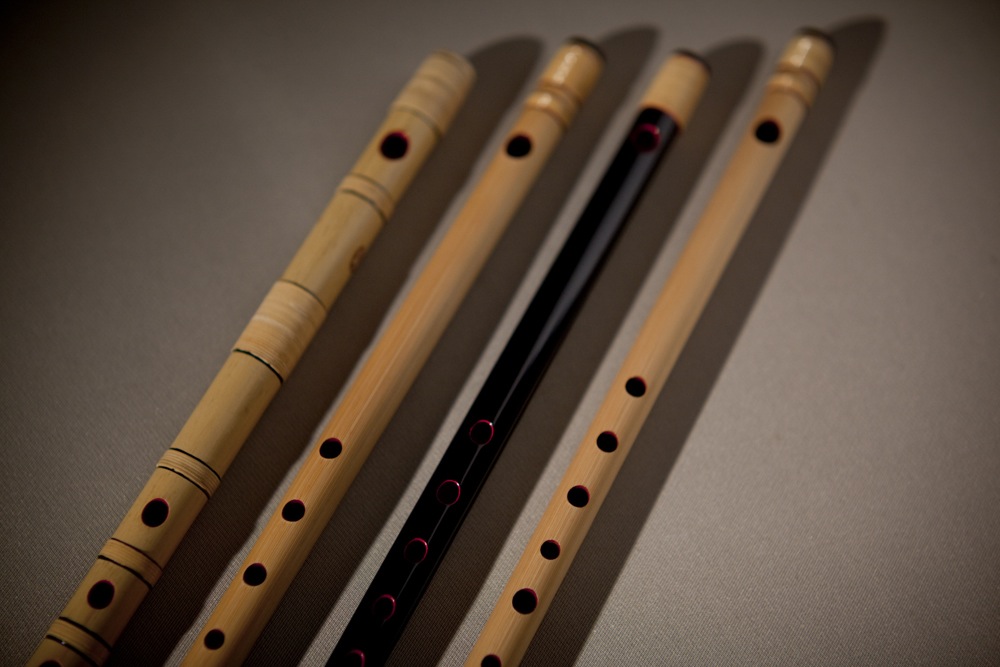
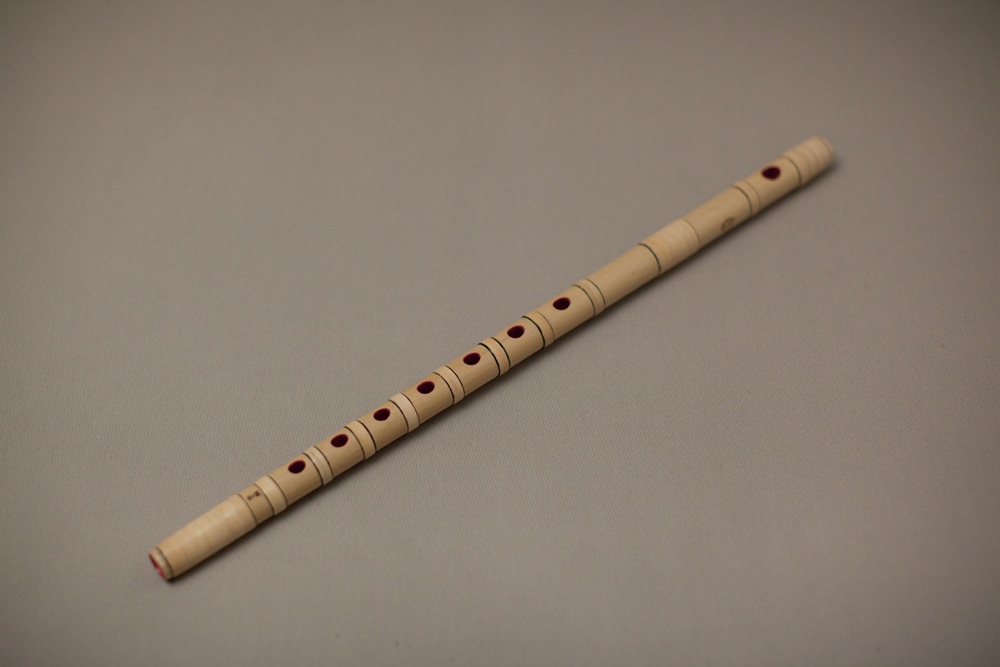
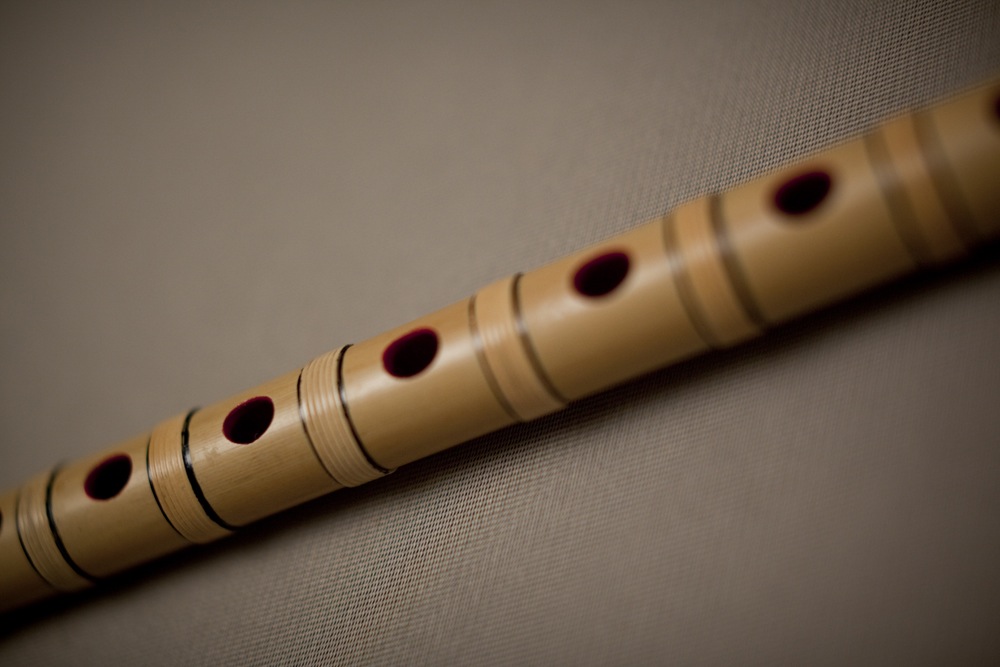
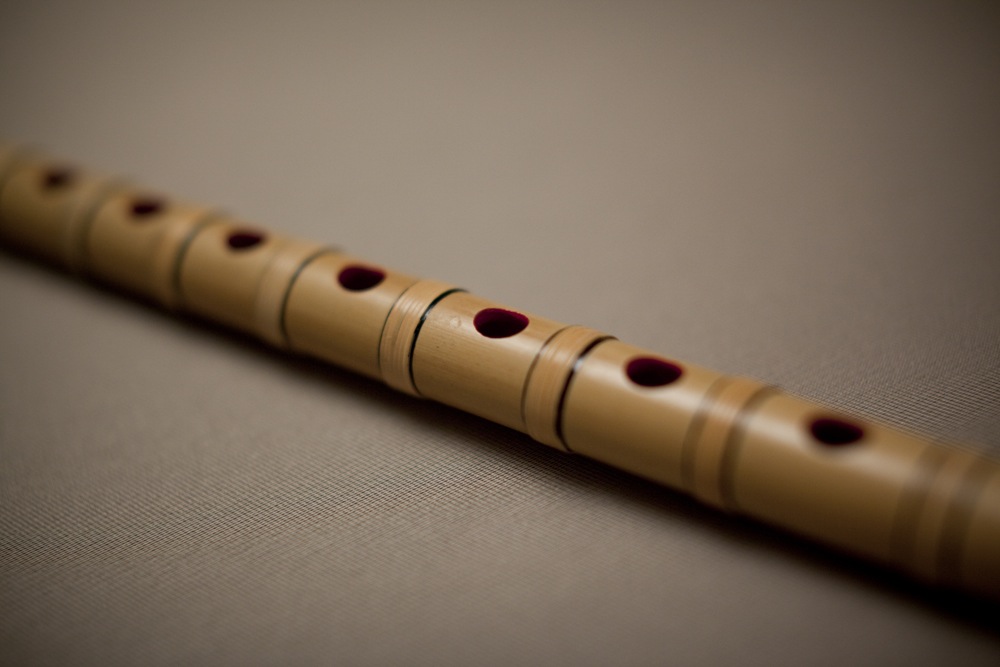
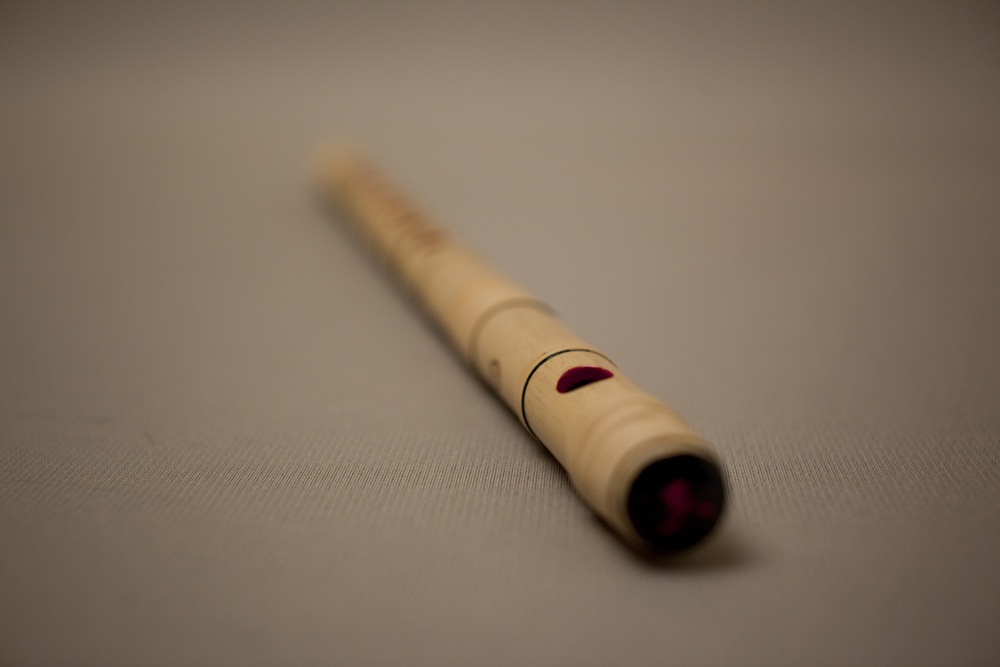
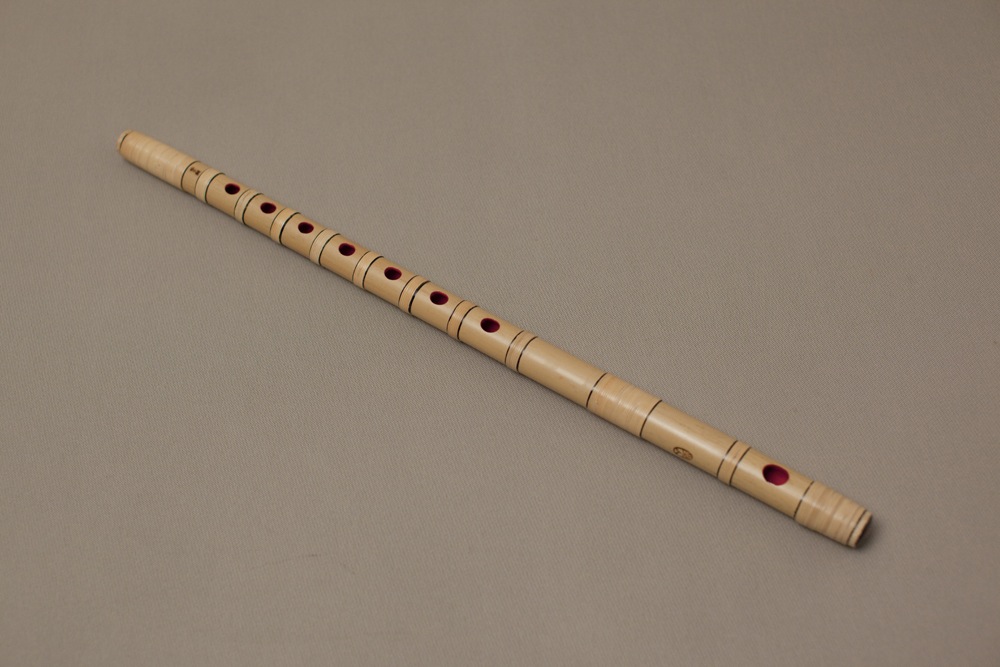
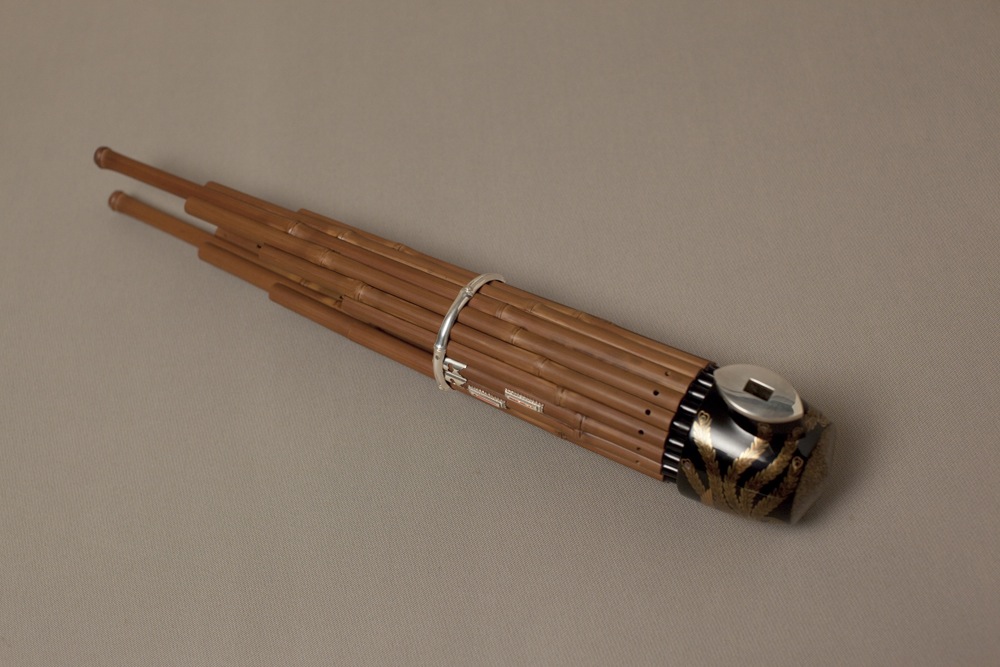



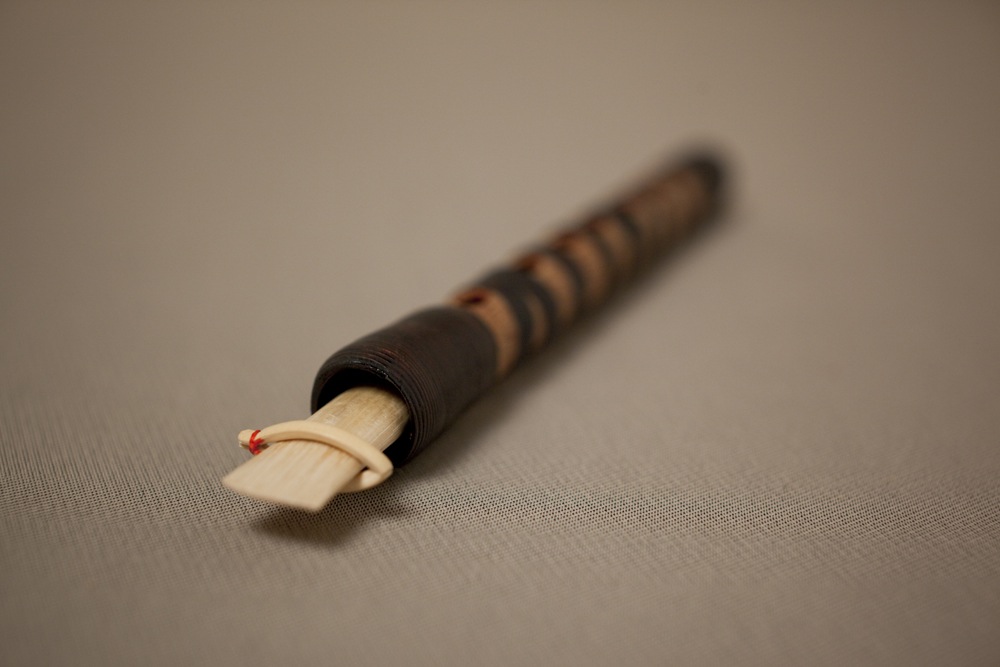

























Japan has many varieties of flute, which shows how widely such instruments have been enjoyed.
There are three types of flutes used in the gagaku genre: the ryūteki, the komabue, and the kagurabue.
The most well-known is the ryūteki, which is used in the tōgaku repertoire (music derived from T'ang China) and in the repertoire of Japanese songs called saibara.
The flute used in music for the noh theatre is called a nohkan, and has a unique structure called a nodo (throat), which results in an irregular tuning.
The shinobue used in kabuki and other folk performing arts is constructed from a simple length of bamboo and is sometimes called a takebue (lit. 'bamboo flute'); it is available in a variety of lengths.
In kabuki music, multiple flutes are used depending on the scene: the shinobue is used to accompany shamisen melodies, and the nohkan is used for sound effects and in some scenes derived from the earlier noh music.
The ryūteki and nohkan have seven holes, the komabue and kagurabue have six holes, and there are both six-hole and seven-hole shinobue.
Training in Japanese flutes employs a memorization method called shōga, which involves reciting phrases of syllables such as 'ō-hyaa-raa', and so on.

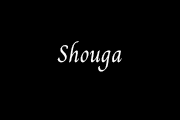


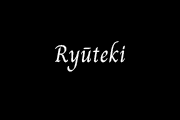
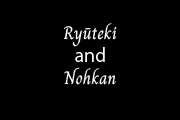
Performance and Explanation by Nishikawa Kōhei
※ When musical notation is used in each episode, it is written in absolute pitch.
composer unknown, classical piece; year of composition unknown
Nohkan solo. In many noh plays, the waki (a supporting role) appears first, introduces himself, and explains the situation. This monologue is accompanied by the nanori-bue melody.
composer unknown, classical piece; year of composition unknown
[Ranjo]
Nohkan solo. The term ranjo originated in the bugaku repertoire--pieces in the gagaku genre that feature powerful dance performances. Ranjo refers to a performance practice in pieces such as the suite Ryō-ō, in which the ryūteki are divided into three groups who overlap each other with canon-like staggered entrances, along with the percussion. In noh music, the term refers to an introductory passage with a grand atmosphere played by a single nohkan, again along with percussion, to announce the appearance of a lion. Its use continued into the kabuki tradition, also for when a lion appears.
[Shishi Kurui]
Nohkan solo. The name of a traditional piece used in noh and kabuki dance music. It expresses the way lions and foxes play and go wild, as seen in the plays Ishibashimono where a lion appears and Kokajimono where a fox spirit appears.
composer unknown, classical piece; date of creation unknown
Solo shinobue. Kabuki music, depicting daikagura troupes walking through the streets during a festival. Originally, the shinobue played along with a slow rhythm on a drum called an okedō. It is also used as a sound effect representing the New Year.
composer unknown (?)
Free performances on the shinobue. As background music for kabuki dance, rather than a pre-composed piece, the performer's improvisation creates a unique atmosphere. While the inakabue evokes a relaxed sense of nostalgia, the sorabue exudes a sense of sadness.